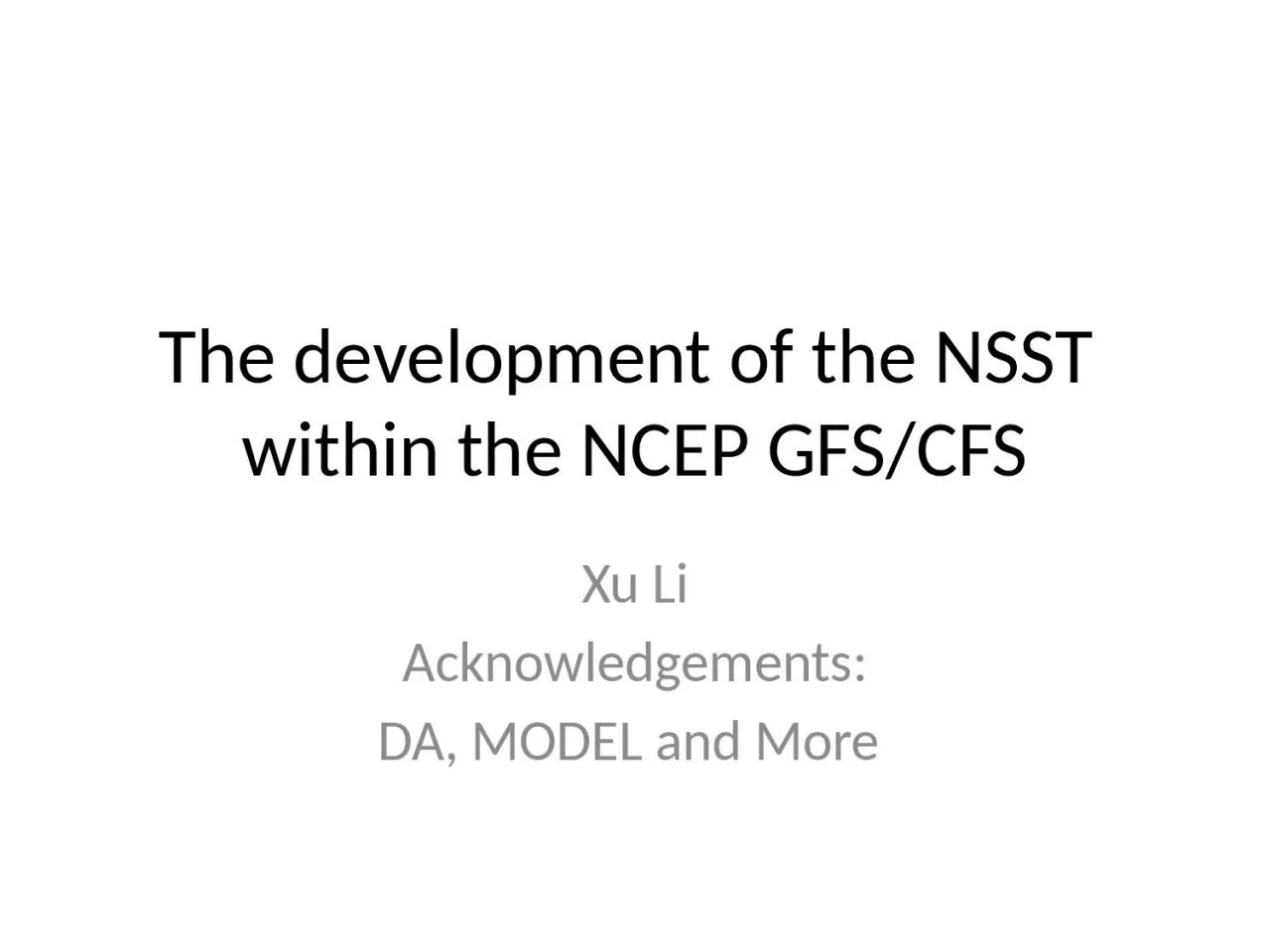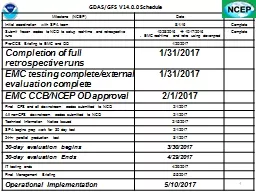PPT-The development of the NSST
Author : kimberly | Published Date : 2024-02-09
within the NCEP GFSCFS Xu Li Acknowledgements DA MODEL and More Outline Introduction The current ocean SST in NWP NSST NearSurface Sea temperature NSST within the
Presentation Embed Code
Download Presentation
Download Presentation The PPT/PDF document "The development of the NSST" is the property of its rightful owner. Permission is granted to download and print the materials on this website for personal, non-commercial use only, and to display it on your personal computer provided you do not modify the materials and that you retain all copyright notices contained in the materials. By downloading content from our website, you accept the terms of this agreement.
The development of the NSST: Transcript
Download Rules Of Document
"The development of the NSST"The content belongs to its owner. You may download and print it for personal use, without modification, and keep all copyright notices. By downloading, you agree to these terms.
Related Documents














